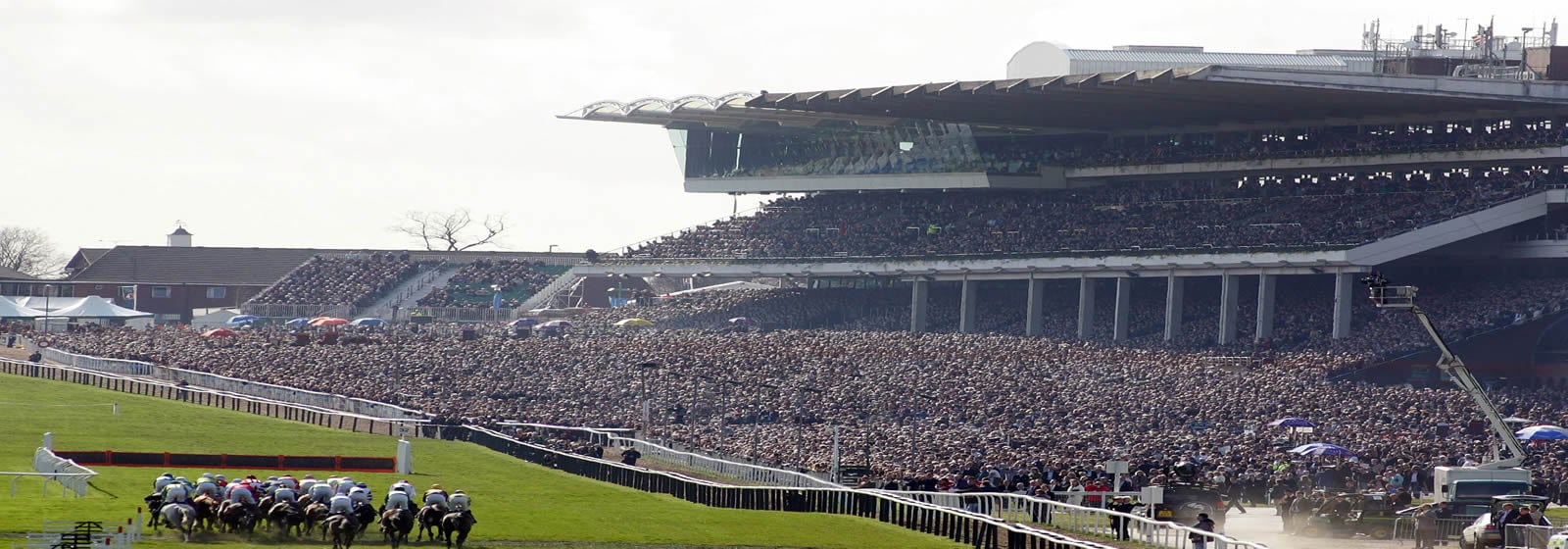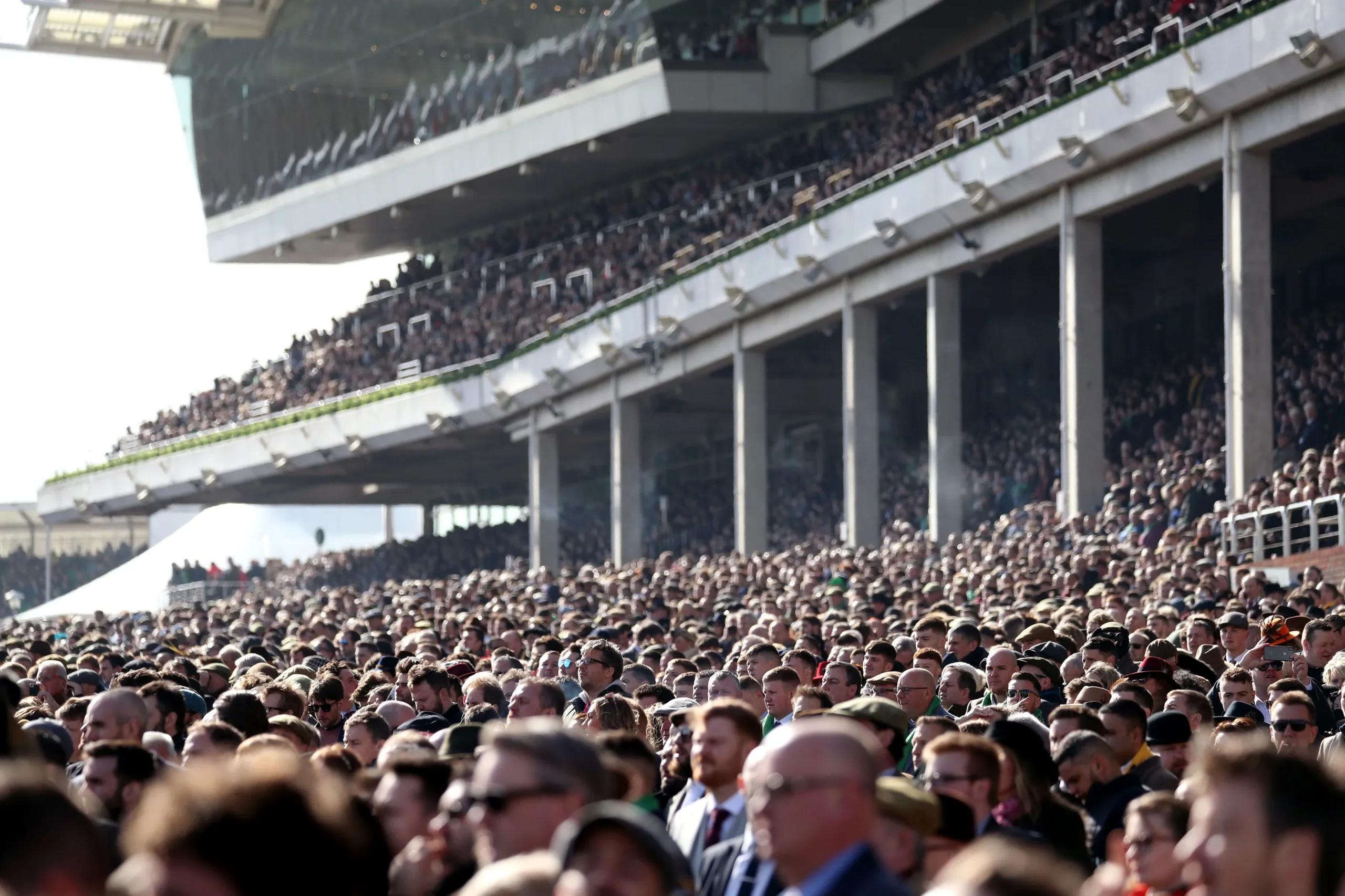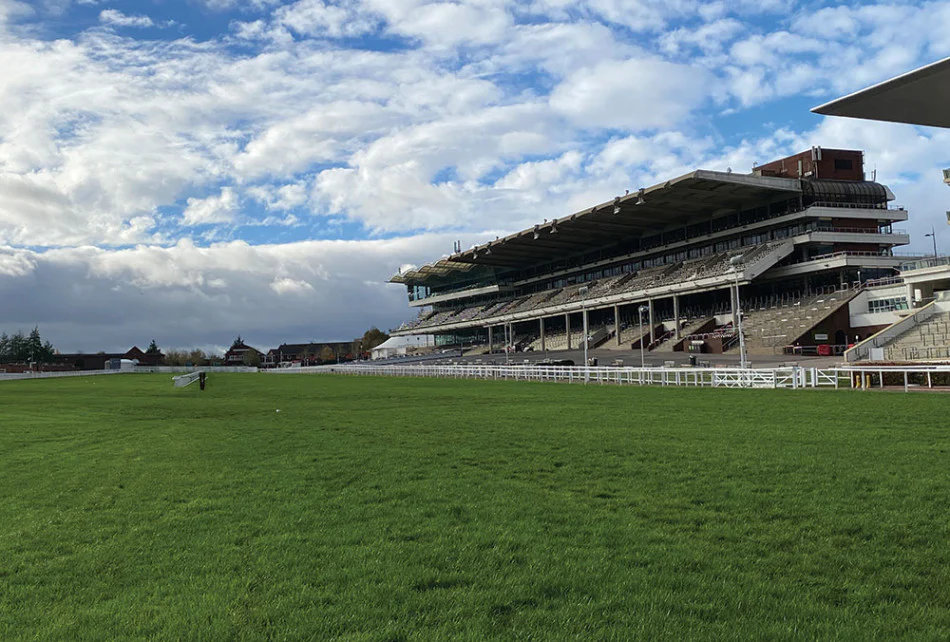Table of Contents
Maintaining and caring for racecourses that host today’s biggest horse racing events involves an incredible amount of work from a dedicated team of professionals who not only care for the upkeep of the surface of the track itself.
There’s also constant maintenance of saddling sheds, totalisators (tote boards), clubhouses, hospitality and catering areas, main grandstands, and any other onsite buildings and associated structures.
Let’s dive straight in to learn more about the yearly upkeep for the Cheltenham Races, home of the Cheltenham Festival.
What Is the Cheltenham Festival?

The Cheltenham Festival is a four-day event that’s regarded by many as the pinnacle event of the jump-racing calendar in England. The most notable race over this four-day event is the Cheltenham Gold Cup.
The left-handed jump racecourse hosts several Grade I races, and apart from the Cheltenham Gold Cup, other notable races include the Queen Mother Champion Chase, the Stayers’ Hurdle, and the Champion Hurdle.
The prize money is second only to the Grand National in Aintree. However, in recent years, the prize money for the Gold Cup has eclipsed the Grand National, making it the most sought-after prize by trainers and national hunt jockeys.
What Does the Annual Upkeep Involve Maintaining a Racing Venue Like Cheltenham Racecourse?
Ensuring the smooth running of the Cheltenham Races requires a great deal of ongoing maintenance, which costs millions of pounds each year.

It’s not just the surface of the track itself and keeping it in pristine condition that requires constant looking after, but also the onsite buildings and other areas of Cheltenham Racecourse that require constant preventative maintenance.
The operators spent a whopping £45 million on the redevelopment of the Princess Royal Stand, and since it opened in 2015, millions more has been spent on keeping it in tip-top condition.
To ensure nothing is overlooked, the Clerk of the Course carefully works out a healthy budget needed each year for the general upkeep of the site.
When it comes to the track and surrounding area, some of the most important things to consider that always require maintenance are the following:
- Drainage/watering systems
- Undersoil heating
- Lightning rigs/floodlighting
- Covers
- Maintaining the grass and any artificial surfaces around the venue
- Running rail
- Obstacles
- Emergency service roads
- Canter downs
- Racing surfaces
- Safety factors
- Banking of bends
- Starting gates
Other things to consider are the many different rooms, such as the stewards’ room, jockey’s room, jockey’s changing/restrooms, valets’ room, Clerk of the Course’s room, declaration room/counter/desk, public address installation room, handicapper’s room, scales/weighing room work area, press interview room, and general media facilities room, to name a few.
That’s not forgetting the previously mentioned saddling sheds, totalisators (tote boards), clubhouses, main grandstands, and hospitality and catering areas.
Don’t forget that several independent businesses also call the Cheltenham Racecourse home and that the venue is used for more than just horse racing events at various times throughout the year.
The Cheltenham Festival in Numbers

The Cheltenham Racecourse operators may spend millions of pounds on the general annual upkeep of the site, but the well-oiled machine also generates huge amounts of revenue at certain times, such as the Cheltenham Festival.
Therefore, it’s crucial to have everything in proper working order to maintain the prestige of the venue and warrant the prices they charge for everything from a prawn sandwich to a pint of Guinness, tickets for the standing areas to a private box.
Let’s take a quick look at a few fascinating facts about Cheltenham in numbers:
- £625,000 – the Cheltenham Gold Cup prize money
- £2,400,000 – how much cash is generally withdrawn from ATMs over the four-day period
- £100,000,000 – the positive impact the Cheltenham Festival has each year on Gloucestershire’s economy
- £4,590,000 – the biggest prize pool on offer at the 2018 Cheltenham Festival (£1+ million awarded each day)
- 65,000 – average attendance at each year’s festival
The National Hunt Chase, Cheltenham Festival’s longest race, is run over a distance of 21,120 feet. Over 8,000 gallons of coffee and tea were consumed by racegoers, and over 40,000 bread rolls were eaten by hungry spectators at the 2015 festival.
Finally, around 5,930 staff are employed each year, including approximately 350 chefs over the Cheltenham Festival.
There are 5 feature races, and between 2009 and 2014, a horse called ‘Quevega’ won 6 consecutive races in the David Nicholson Mares’ Hurdle – more consecutive victories by a horse than at any other Cheltenham Festival race.





